Natural light – some thoughts on how to use it.
Natural light is a delight to work with, though it can be enormously frustrating too! Where you live determines a whole lot, if like me you photograph close to home. For me that is northern Scotland. I’m writing this in December, so the hours of daylight are very short, the sun is low in the sky, and I wake to blackness outside. So working with the light is both a seasonal and geographical challenge – or opportunity! The day may be bright or dull, with wind or rain to complicate the shots – but my aim is to catch the special fleeting light that will express that moment, that day out with my cameras. And I count it a success if, looking through the photos I’ve taken, they bring back the feeling of that day. Even better if I can recall details about taking that particular shot (or sequence of shots) such as the heat of the sun, the time of day, the sounds and smells surrounding me, and the camera and lens I was using.
Natural light is such an immense subject – most of us have folders filled to overflowing with examples, successful and not so successful. So I have tried to select just a few representative examples of a few situations where I have learned (often after quite a struggle) how best to make use of the light on a given day. Hopefully they will resonate with you, and maybe raise a smile of recognition too ;o)
Time of day and season
These two shots were taken at the same time of day, one ‘on the road’ and one in my garden. But that is all they have in common! The same time of day in May and October can give you two very difference challenges. Add location and the weather to the mix, and the plot deepens!

9 a.m in May on the road to Inverurie, with perfect sunlight shining through the trees, casting shadows across the road, and lighting up the bright yellow of the rapeseed. In the distance is Bennachie, our local peak. I don’t think I’ve ever bettered this moment of that particular view!
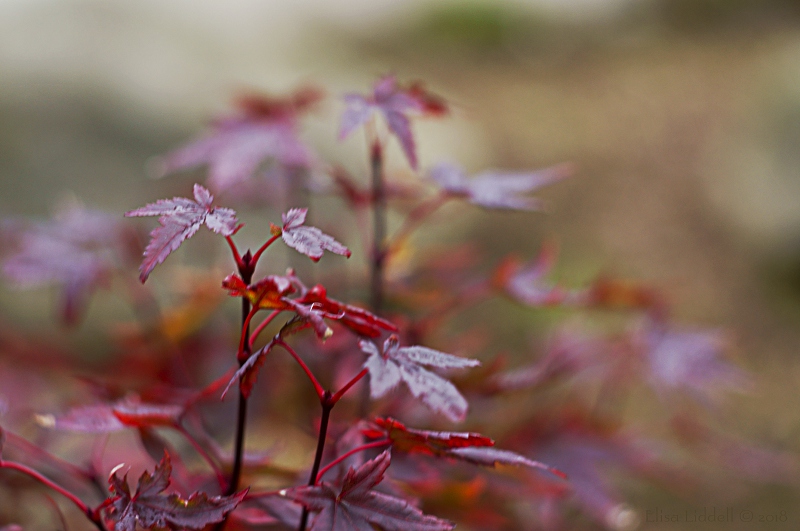
A rainy day with dull light and no sunshine. The only warmth came from the autumn colours of the acer leaves. It had been raining most days, and the sun was mostly absent. I finally decided to try to catch the mood of the cold, wet autumn morning itself, as expressed in the leaves.
Monochrome
Although I shoot in full colour, I sometimes sense that I will finish the shot in Black and White (B+W) on the computer. B+W can often show the play of light and shadows more clearly than colour can. Strip away the colours and the light can shine through! Some people prefer to shoot in B+W, but personally I shoot in colour – to me it makes best sense to capture as much as I can of the subtle tones my eye can see. Later, at the computer I can manipulate the image, making several layers with differing tonal values, and working them together to make the final image.
Again I have chosen just two shots, one with sunshine, like the road shot above, and one with the same dull light as the acer leaves in my garden. Both were shot with my little Sony RX100 set on Auto as I walked round familiar places. My RX100 is the one I use as my ‘on the fly’ pocket camera, as you might use your smartphone – the one that is always in your pocket. I wasn’t out primarily to shoot, so the shots were incidental, and just spur of the moment.
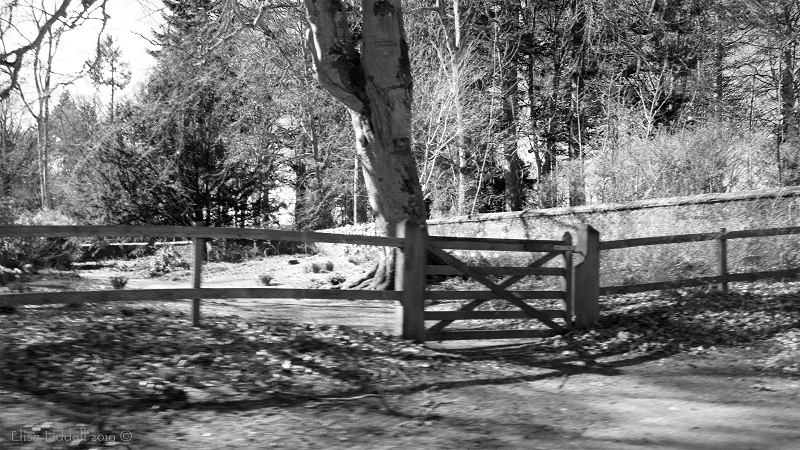
The loch-side walk at Fyvie castle is our favourite place to just walk and enjoy the fresh air. Although we live in the country, in a small village, there are surprisingly few places to walk. Between intensive farming and lanes busy with traffic and no footpaths, us humans wanting a walk are squeezed out!
This morning in March the sun was shining through the trees and casting the shadows of the fence across the path. The trees were still bare, and looking grey and scruffy without their leaves. But the B+W treatment really focuses the eye and brings out the brightness of the light.
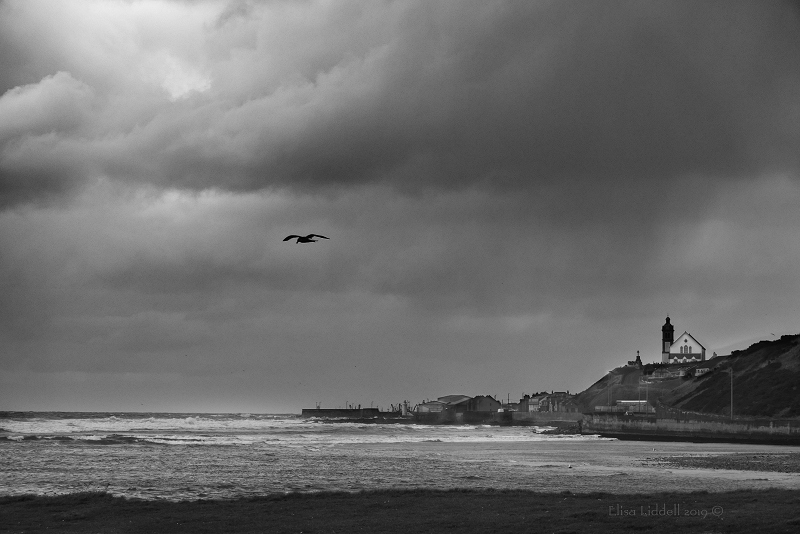
And here we were taking the sea air in Banff, looking across the estuary towards Macduff. The day had a cold and stormy feel with a threatening sky and just a few fleeting moments of sun breaking through the heavy cloud cover and illuminating the sea. I didn’t expect to find a ‘keeper’, I knew the weather was against me! But these fleeting moments of sunlight caught my eye, so I took a few shots. The joy of digital cameras means it doesn’t cost anything to speculate and take unplanned shots. You may end up with many folders of shots you never use, but you can find surprises that make it worthwhile! When I looked through the shots on the computer, I thought this one might work well in B+W. The intrepid seagull was an unexpected bonus!
Up close
Using natural light doesn’t always mean shooting landscapes. It can offer a range of challenges for the macro lens too. I shoot flowers, leaves and berries – anything that catches my eye and catches the light while I am outside. I also often shoot indoors, using the south-facing bay window as a small ‘studio’ and I count these images as ‘natural light’ as long as I don’t use any other light source.
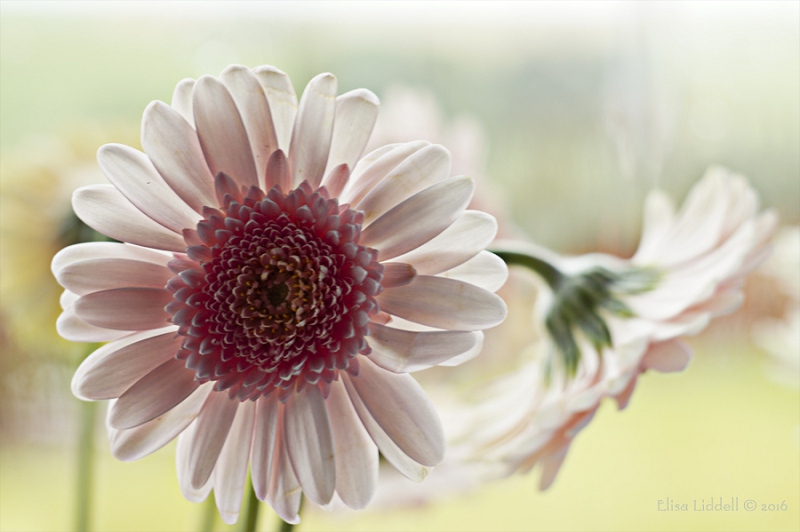
Here the sun worked as a back-light illuminating the gerbera flowers, and giving reflections in the window too. The lens also transformed the view of the garden beyond into a pleasing silky bokeh blur! This effect needs a lens that can shoot close up at F2 or F2.8 to transform the background in this way. The lens I used is especially good at making bokeh in camera … something I cover a little later on.
But what about out ‘en plein air’ with a macro lens on your DSLR camera? As a rough rule-of thumb, the closer you get to the subject, the more light you need to let in to the sensor. So bright sunlight might seem to be ideal for shooting macro outdoors. But bright sunlight can be very unforgiving, and quite harsh, bleaching out the subject.
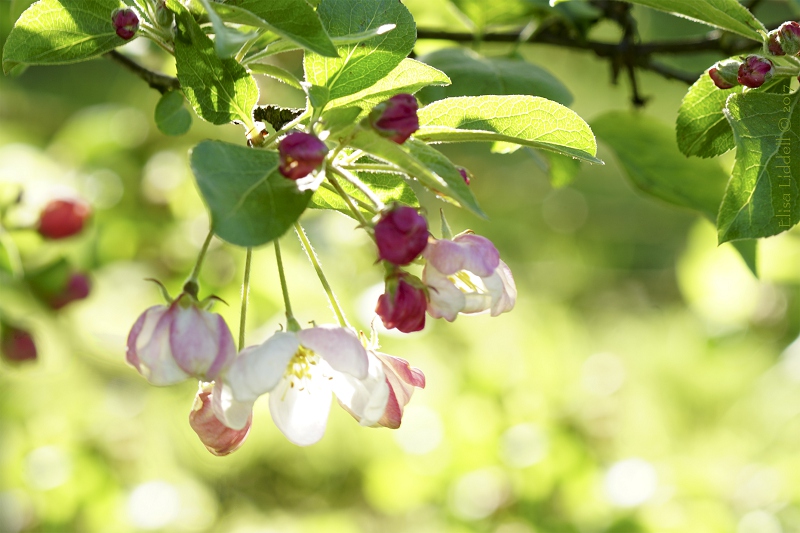
This shot was taken in the garden, shooting the apple blossom in Springtime sunshine. The sun was too bright to shoot directly, as all the white petals lost definition. So the late afternoon sunshine became the bokeh background, as I shot from inside the tree canopy! Even then one petal caught too much reflected sun!

This example is taken from a morning shoot with natural light, but no direct sun to bleach the petals. Rather there is a slanting light that is cooler and gives better definition and detail. When shooting macro or close-up outdoors, I find I am even more at the mercy of the available light. And sometimes the macro lens languishes in the car boot ;o)
Winter
And the light in winter can be just as challenging, and just as varied – Nature isn’t going to make things easy for us! As well as handling the camera and lens in really low temperatures, which can make your lens and EVF mist up, the actual light, especially on snow, can be quite a challenge!
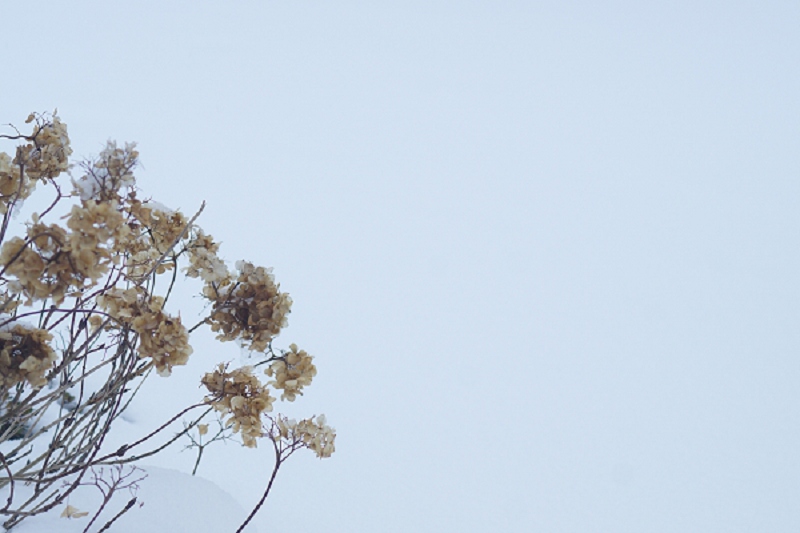
Here the day was dull, the winter afternoon was moving swiftly towards twilight, and the light came mainly from the snow itself. I thought it was worth trying, as the dead hydrangea flowers seemed to be scratched and etched against a background almost like heavy watercolour paper.

The comparison here could not be starker! The low winter sunlight cast long shadows, and played on the snow – making it sparkle. There were gorgeous purple and blue tones in those shadows!
Overload
A problem that crops up so often is that shooting outdoors you can’t control the background! It is especially difficult when shooting close-up with flowers and leaves. In the studio you can single out a flower and position it so that there are no distractions. Out ‘in the wild’ there are no such luxuries – you have to take what nature offers!
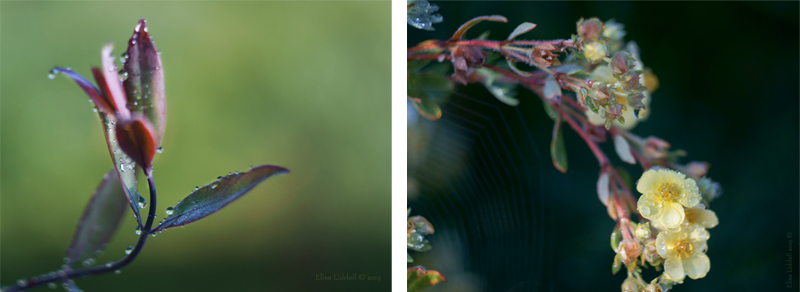
If you are fortunate and the subject happens to stand alone, as in the two shots above – then you are in luck. Here the subjects I wanted to capture stand out nicely against backgrounds that do not fight for your attention. The eye stays firmly on the subject. But in all honesty these are quite rare occurrences! I can find myself twisting and turning, trying to find an angle that will isolate the blossom, leaf, bud, dewdrop or spider’s web that has caught my eye!
More often what I want to shoot has close companions, and I have to resort to alternative solutions ……

This is a ‘before and after’ example of an all too common problem. There had been the most spectacular overnight dew, and the garden was ablaze with early sunshine. I so wanted to capture as many shots as I could of the amazing scene. But if I tried to arrange a flower, the dew drops simply slid off the petals. I had to shoot what was there! The light was so bright the dewdrops were shining bright white … a double challenge! I chose to shoot darker than I normally would – it is always easier in post-processing to lighten a shot rather than recover bleached out details. And I had to accept that a whole lot of post processing manipulation would be needed to make the flower stand out from the spectacular bokeh all around it!
The final result I managed to produce incorporated the bokeh background, while dulling it a little, and brightened the flower to encourage it to stand out and catch the eye. But is was quite a long job!
Lenses
And finally in this brief look at using natural light I really should mention that the lens you use is so important! There are additional wonders to be found when you add an unusual lens to the mix. I confess to having quite a few specialist lenses, and here I’ll just hint at three ways of adding a new dimension to your outdoor shooting, especially landscapes or seascapes
First there is the Lensbaby …..

Here the Lensbaby worked its own in-camera magic, playing with the light and making a completely new feel to a simple shot of an autumn tree framing a view of Leith Hall.
I’ve written a whole section on the Lensbaby optic – so I won’t expand on it here.
Then there is the world of infrared shooting…..
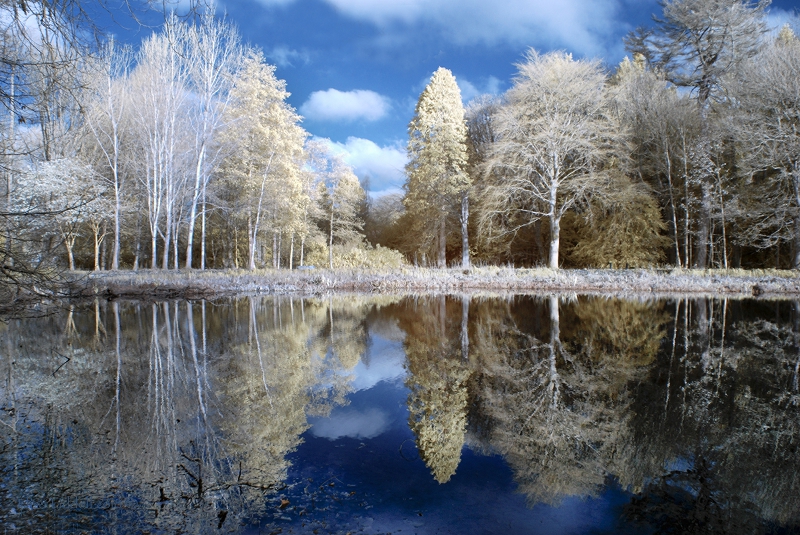
Using IR filters or an IR converted camera (my choice) you can transform a familiar landscape into a whole other worldly experience. Again, I have written a whole section on Shooting in Infrared if you would like to follow up on the idea. I find that both the Lensbaby and the Infrared choices add a new dimension to what the eye can see!
And finally there are techniques to use to shake things up in another way! ICM, or in-camera movement offers a range of ways to create new optical effects. It is possible to create these effects afterwards, using post-processing computer programs such as Photoshop … but there is a freshness about the results you get from on the spot in-camera shots. It’s not something I use much myself, but I have a lens that does make magic for me …..

Some of the lenses I have collected are old ones from way before the days of IS or Image Stabilising. They will respond to the slightest hand tremor or shake, especially when shooting at F2.8 and below! This shot was taken using my Meyer-Optik Orestor 135mm f/2.8 (1966) lens. And it makes an interesting ‘take’ on some trees ;o)
This page can only offer a tiny sample of shots, the merest sketch of the possibilities that lie in outdoor shooting using only the natural light that nature and the weather provide! Nature provides an endless playground, full of opportunities, just waiting for us to step outside and explore and experiment!
Back to the LIGHT cover page
on to Shooting with artificial light
Back to the Zen Camera cover page
Flickr holds Elisa’s online Photo Gallery
© 2019 Elisa Liddell
